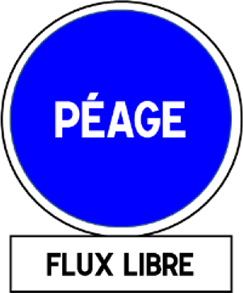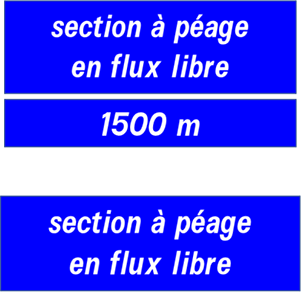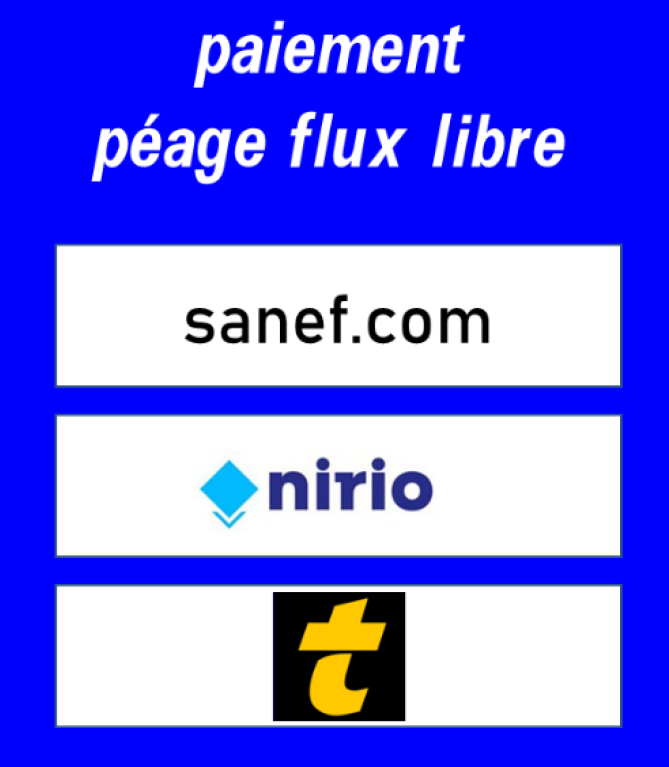What signs or directions should I look for?
Free-flow tolling is revolutionising your motorway experience: no need to slow down or stop to go through a barrier. But how can you tell if you're on a motorway equipped with this new system? There are a number of visual and contextual elements that can tell you. Here's everything you need to know to easily recognise a free-flow toll motorway.
When you travel on a Sanef motorway with a free-flow toll system, there are a number of specific signs informing you of the presence of this system. These signs include the words "Péage en flux libre" or "Péage sans barrière", accompanied by an icon representing a car passing under a gantry crane.
 ,
,

You will also see blue signs indicating payment methods and reminding you that you must pay the toll, even if there is no visible barrier. This information is repeated regularly throughout your journey, particularly before and after passing through a gantry.
What free-flow toll gantries look like?
On free-flow motorways such as the A13/A14 between Paris and Normandy, the old toll plazas are being replaced by gantries equipped with sensors and cameras. These technological devices can read your number plate or detect your electronic toll tag if you have one.
These gantries are clearly visible: they are large metal structures crossing the roadway, often preceded by road markings and vertical signs.
How does free-flow tolling work?
On a free-flow motorway, there are no physical barriers. The system is based on the automatic identification of vehicles, either by reading the number plate or using an electronic toll tag. You don't have to do anything at the time, but it is essential to pay your toll afterwards if you don't have a badge.
